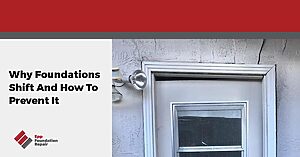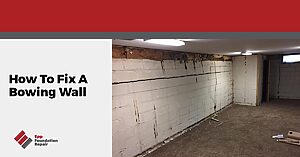Cracked walls can be far more than unsightly. They can be signs of more serious problems like water damage or foundation issues. But how can you tell what’s causing the crack in your wall? You’ve come to the right place! In this article, we will break down the types of wall cracks, common causes, various repair solutions, and insight into when to call a professional for assessment.
What Are the Different Types of Wall Cracks?
Concrete, drywall, plaster, stucco, brick, you name it, and it can crack. Determining the type of crack your wall has is the first step to understanding the cause of the crack and repairing it. While the following list is not exhaustive of the types of cracks that can appear in your walls, the vast majority will fall into one of these five categories:
- Hairline Cracks – Hairline cracks are fine cracks that are smaller than 1/10 of an inch wide. They may vary in size and quantity and are usually superficial, requiring minimal repairs.
- Vertical Cracks – A vertical crack runs straight up and down and is not often a cause for alarm. If you have a drywall crack that seems perfectly straight, it is likely due to faulty seam taping between two drywall sheets, and it can be easily repaired. But if there are multiple vertical cracks along the same wall, especially if it is an exterior or foundation wall, there could be foundation issues with your home.
- Horizontal Cracks – A horizontal crack runs parallel to the floor. These cracks are usually quite serious because they are signs of structural problems.
- Diagonal Cracks – These cracks typically run at about a 45-degree angle across the wall. They often start from corners, window frames, and door frames. Diagonal cracks almost always signal foundation damage.
- Stair-Step Cracks – Stair-step cracks are common in brick and concrete block walls and travel up along the seams of the blocks. Stair-step cracks are a tell-tale sign of foundation problems.
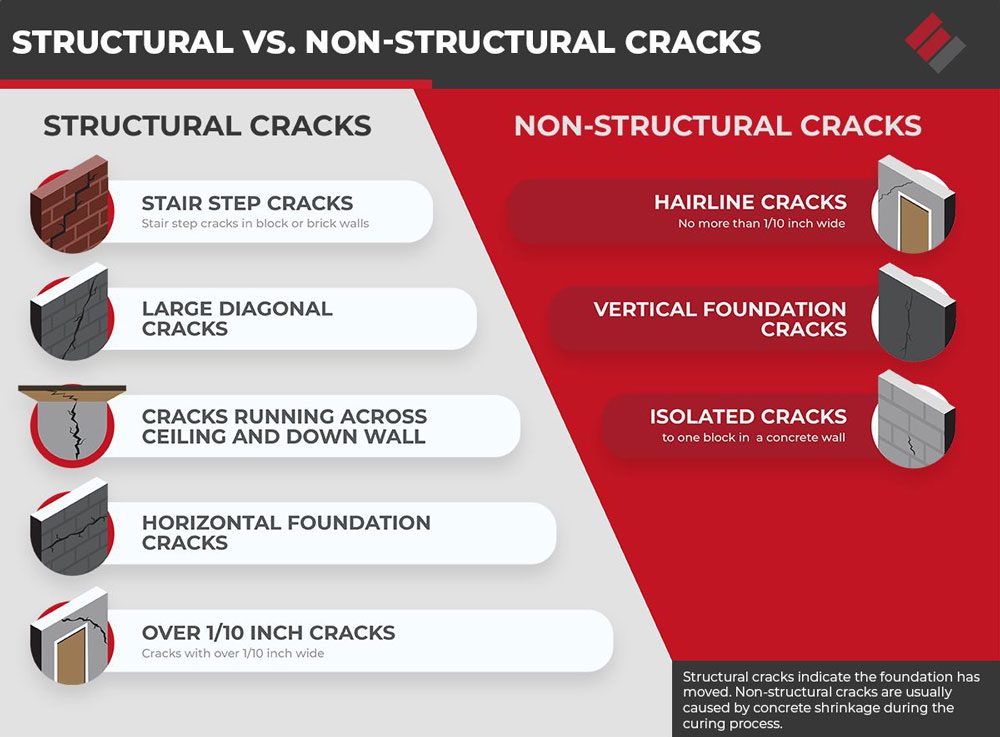
What Causes Wall Cracks?
Wall cracks can be caused by various factors, ranging from water leaks to severe structural issues. Here are some common causes of wall cracks:
- Moisture – Water infiltration from leaks, plumbing issues, or high humidity levels can weaken the structural integrity of the walls and lead to cracks. Moisture-related cracks may be accompanied by staining, bubbling, or peeling of paint or wallpaper.
- Age and Wear – As buildings age, materials may degrade or deteriorate, increasing susceptibility to cracks. Normal wear and tear and poor maintenance can also contribute to the development of cracks over time.
- Settling – When a building’s foundation settles over time, it can cause the walls to shift slightly, leading to hairline cracks. Minor settling is common in most buildings and usually does not pose a significant structural concern. However, differential settlement, when your home sinks unevenly, is a severe problem that requires professional attention. Differential settlement may happen because of factors like expansive soil, drought, oversaturated soil, and invasive tree roots.
- Temperature Fluctuations – Changes in temperature and humidity levels can cause materials like drywall to expand and contract. Over time, this repeated movement can result in cracks, especially in areas with extreme temperature variations or homes left vacant for multiple months without temperature regulation.
- Poor Construction Techniques – Improper drywall installation, inadequate framing, or subpar building materials can contribute to wall cracks.
- Exterior Factors – External factors such as nearby construction work, heavy traffic vibrations, or tree roots can exert pressure on the building structure and contribute to wall cracks, especially if the building’s foundation was previously compromised.
- Natural Disasters -Earthquakes, floods, or tornadoes can cause sudden and severe structural damage, including wall cracks.
Identifying the underlying cause of wall cracks is crucial for determining the appropriate repair approach. While minor hairline cracks may only require cosmetic fixes, more severe or structural cracks may necessitate professional repairs to ensure the safety and stability of the building.
When Should I Worry about My Cracked Walls?
While we recommend that all cracks be readily fixed to prevent future issues, not all cracks should cause alarm. The key is to determine whether the crack is structural, which requires careful observation and assessment. Here are some indicators that can help you identify whether a crack may be related to structural issues:
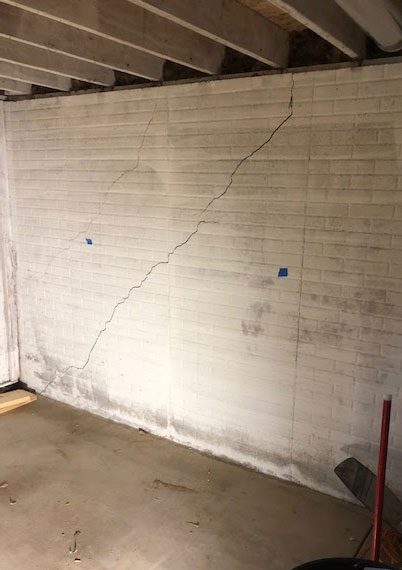
- Width – Structural cracks are wider than hairline cracks, 1/10 inch or wider. They may also extend diagonally or horizontally across the wall or appear in a stair-step pattern along mortar joints in masonry walls. Additionally, if the crack seems wider at one end of the crack, it is likely a structural crack.
- Location – Cracks near corners, windows, doors, or along the edges of ceilings are more likely to be related to differential settlement. Cracks that appear repeatedly in the same location may indicate ongoing structural issues.
- Depth – Structural cracks often extend beyond the surface layer of paint or plaster and may be accompanied by visible separation or displacement of the surrounding materials.
- Associated Symptoms – Look for other signs of structural issues, such as uneven floors, doors or windows that no longer close properly, or gaps between walls and floors or ceilings.
If you suspect that a crack may be structural, it’s essential to consult with a foundation repair specialist for a thorough assessment. They can evaluate the cracks’ characteristics, inspect the foundation and structure, and recommend appropriate repairs. Ignoring or patching up structural cracks will only lead to further damage and compromise the safety and stability of your home.
Can You Fix Cracked Walls?
Cracked walls are absolutely fixable. However, you must correct the underlying issue before fixing a crack. For instance, if a plumbing leak caused the crack, you must stop the leak and replace the drywall, otherwise the crack will reappear. If your house is settling unevenly, you will need foundation underpinning to raise and stabilize your home before attempting to fix the crack.
Once the underlying issue has been corrected, it is time to patch the crack. Here are some standard repair methods:
- Drywall Patch – Prepare the wall by removing debris, such as paint chips, old drywall tape, etc. Then, spread joint compound over the crack, apply drywall tape, and another layer or two of joint compound. Once the crack is covered, smoothen the wall out with a wet sponge. Once the wall is dry, you can paint. For more detailed instructions, read the article “How to Fix Cracked Drywall Ceiling.”
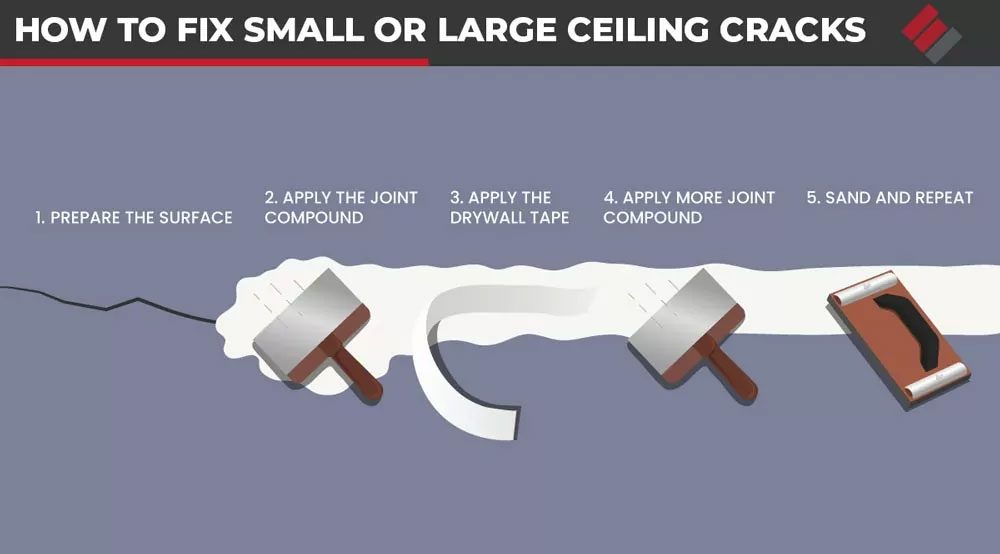
- Epoxy Injection – This repair solution is for larger hairline cracks, typically in concrete walls. It involves a professional injecting a urethane resin into the crack and sealing it with an epoxy paste. Epoxy injections come with a 2-year transferable limited warranty.
- Xypex Crack Repair – If your concrete foundation wall has a large crack, a specialist can use the Xypex crack repair system to fill and seal the crack from inside your home, eliminating water and air leaks. This solution comes with a 10-year transferable “NO LEAK” guarantee.
- Wall Clay Process – If there is a crack in your foundation but it is obstructed by drywall or paneling, a professional can repair the crack from the exterior of your home using a waterproof granular clay solution.
When Should I Call a Professional about My Cracked Wall?
If you suspect that the crack in your wall seems to be structural, it is imperative to call a foundation repair specialist. Foundation damage only worsens, making time your enemy. Calling a professional early on will ensure that your home remains safe and repair costs are minimal. Remember, if you notice any of the following signs, your crack is likely structural:
- Wider than 1/10 inch
- Horizontal, diagonal, or stair-step crack
- Multiple vertical cracks
- The crack is wider on one side
- The crack is near a corner, door frame, or window frame
- You spot other problems like uneven floors or gaps between the wall and floor or ceiling
We offer free foundation inspections and are happy to help you find the best solution for your home’s needs. We service Nebraska and parts of Iowa, Missouri, and Kansas. Schedule your foundation repair consultation today.



